 Constant tooth pain is irritating, and can be downright debilitating if it hurts enough. If you experience regular bottom teeth pain, the first thing you should do is visit your dentist so that whatever is wrong doesn’t get worse. But it doesn’t hurt to learn what might be causing your bottom teeth to hurt in the meantime. Here are 5 reasons why your bottom teeth may hurt.
Constant tooth pain is irritating, and can be downright debilitating if it hurts enough. If you experience regular bottom teeth pain, the first thing you should do is visit your dentist so that whatever is wrong doesn’t get worse. But it doesn’t hurt to learn what might be causing your bottom teeth to hurt in the meantime. Here are 5 reasons why your bottom teeth may hurt.
You’ve Got A Cavity
Cavity Tooth Pain Symptoms: Typically, pain caused by cavities can be felt sharply, consistently and suddenly in one or more teeth when you bite down. Cavities can also cause sensitivity.
If you haven’t been getting rid of all of the plaque on and around your bottom teeth by brushing, flossing and using mouthwash, you may have cavity. Cavities can also be caused by gum recession. Cavities are holes in your teeth created by acids, which love eating away at your enamel. Thankfully, fixing a cavity is quick and easy. All your dentist has to do is fill it in with dental filling material.
Your Root Might Be Infected
Infected Root Tooth Pain Symptoms: If you experience a severe and constant bottom toothache that causes throbbing or shooting pain, you may have an abscessed tooth, or root infection. Your teeth may also feel sensitive to extreme temperatures and when biting down, and your gums and glands may be swollen.
Severe tooth decay is usually the reason why an infection develops at the root of your tooth. When acids have been allowed to dissolve your enamel for a while, bacteria infects the center of your tooth (the pulp) between your gum and your tooth. If you don’t see a dentist to cure your infection, it can spread to the bones that support your bottom teeth. A root canal can be performed to rid your teeth of the infection.
You’re Clenching and/or Grinding Your Teeth
Clenching/Grinding Tooth Pain Symptoms: If you bottom teeth pain is less severe, and more of a constant throbbing or achy pain, you may grind or clench your teeth too much.
Many people clench their teeth when they are concentrating or working out at the gym. You may also grind your teeth while you’re sound asleep. When you grind or clench your teeth often, you wear down your enamel, which exposes the tubes that lead to your nerves. This can lead to sensitivity and tooth pain. If you think you clench or grind your teeth, speak to your dentist about wearing a mouth guard.
You Fractured Your Tooth
Fractured Tooth Pain Symptoms: If you experience irregular pain in a bottom tooth when you’re chewing or when your tooth is exposed to extreme temperatures, you may have a fractured tooth.
The center of your tooth contains soft tissue, called the pulp, where your nerves are located. Your enamel and dentin, which is the hard layer underneath your enamel, protect your nerves. The closer your pulp is to being exposed, the more you irritate your nerves, which can cause pain and sensitivity. There are several different dental procedures that treat cracked teeth, depending on the severity, from crowns to root canals.
You Have Other Serious Health Issues
Bottom teeth pain isn’t always a sign that you have dental issues. Teeth pain can also be caused by a variety of other serious health issues that you might not even think of. These include heart attacks, sinus infections, cluster headaches, viral infections, diabetes, nerve-related disease, alcohol or drug abuse, and more.
The only way to truly find out what is causing your bottom teeth to hurt is to speak to your dentist. They’ll be able to get to the root of your teeth pain and provide you with solutions to make you pain-free again.
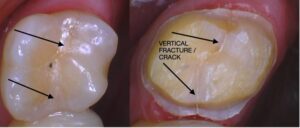
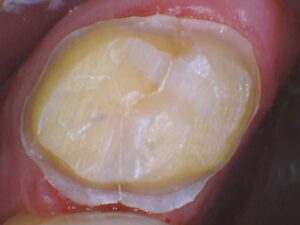
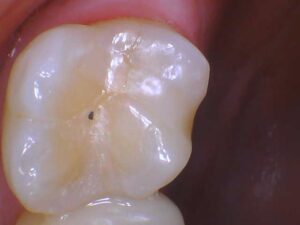

 You can’t always put off seeing the dentist. If you have a simple cavity, it’s easy to wait to see the dentist for a couple of days. A painful cracked tooth is another story. We’re here to help you figure out what you should do if you have a dental emergency in Chicago. The more prepared you are, the quicker you’ll be able to deal with any serious dental issues.
You can’t always put off seeing the dentist. If you have a simple cavity, it’s easy to wait to see the dentist for a couple of days. A painful cracked tooth is another story. We’re here to help you figure out what you should do if you have a dental emergency in Chicago. The more prepared you are, the quicker you’ll be able to deal with any serious dental issues. When it comes to your social and professional life,
When it comes to your social and professional life, 
 Everyone in Chicago knows that the city’s winter weather can be hard on your commute, skin and nose. But extremely cold weather can also affect your teeth and mouth. Many Chicagoans experience uncomfortable sensations or even extreme pain in their mouth while in icy weather. Let’s take a look at why that happens and what you can do to keep your teeth and mouth feeling great all winter long!
Everyone in Chicago knows that the city’s winter weather can be hard on your commute, skin and nose. But extremely cold weather can also affect your teeth and mouth. Many Chicagoans experience uncomfortable sensations or even extreme pain in their mouth while in icy weather. Let’s take a look at why that happens and what you can do to keep your teeth and mouth feeling great all winter long! Constant tooth pain is irritating, and can be downright debilitating if it hurts enough. If you experience regular bottom teeth pain, the first thing you should do is visit your dentist so that whatever is wrong doesn’t get worse. But it doesn’t hurt to learn what might be causing your bottom teeth to hurt in the meantime. Here are 5 reasons why your bottom teeth may hurt.
Constant tooth pain is irritating, and can be downright debilitating if it hurts enough. If you experience regular bottom teeth pain, the first thing you should do is visit your dentist so that whatever is wrong doesn’t get worse. But it doesn’t hurt to learn what might be causing your bottom teeth to hurt in the meantime. Here are 5 reasons why your bottom teeth may hurt. From putting on caps to placing dental veneers, dentists do a lot of interesting things to keep your teeth in tip-top shape. If you live your daily life outside of the dental world, you might find all of the stuff we do to be a bit confusing. We’re here to break down some of the most popular cosmetic dental treatments we offer at Water Tower Dental Care to help you better understand which procedures can best help your smile. Here’s the difference between caps, crowns, veneers, onlays, inlays and fillings.
From putting on caps to placing dental veneers, dentists do a lot of interesting things to keep your teeth in tip-top shape. If you live your daily life outside of the dental world, you might find all of the stuff we do to be a bit confusing. We’re here to break down some of the most popular cosmetic dental treatments we offer at Water Tower Dental Care to help you better understand which procedures can best help your smile. Here’s the difference between caps, crowns, veneers, onlays, inlays and fillings. Balancing work, friends, family, hobbies and relaxation time is hard enough. Trying to find the time to squeeze in a dentist appointment to fix your broken tooth before it gets worse may seem impossible. You need to fix your broken tooth before your nerves are exposed to dangerous bacteria that can cause serious infection, but you can’t seem to find the time to get around to making multiple visits to the dentist. That’s where CEREC One-Visit Crowns come in.
Balancing work, friends, family, hobbies and relaxation time is hard enough. Trying to find the time to squeeze in a dentist appointment to fix your broken tooth before it gets worse may seem impossible. You need to fix your broken tooth before your nerves are exposed to dangerous bacteria that can cause serious infection, but you can’t seem to find the time to get around to making multiple visits to the dentist. That’s where CEREC One-Visit Crowns come in. 
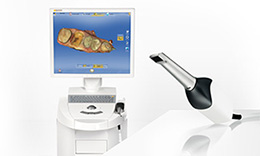 Water Tower Dental is committed to staying at the forefront of technological advancements in the field of dentistry. One of the most exciting advancements in the last few years has been the introduction and updates of the CEREC, a software innovation that allows dentists to digitally design all-ceramic crowns and porcelain veneers in just one visit.
Water Tower Dental is committed to staying at the forefront of technological advancements in the field of dentistry. One of the most exciting advancements in the last few years has been the introduction and updates of the CEREC, a software innovation that allows dentists to digitally design all-ceramic crowns and porcelain veneers in just one visit.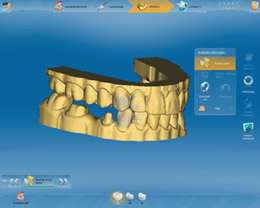 The beginning of the crown process is the same. First, your dentist will shave down your tooth to prepare it for a crown. However, rather than a wax mold, your dentist is able to use the CEREC scanner to make a 3D image of your tooth and the surrounding area. The image is uploaded to a design unit with uses CAD/CAM software to create a 3D model of the new crown.
The beginning of the crown process is the same. First, your dentist will shave down your tooth to prepare it for a crown. However, rather than a wax mold, your dentist is able to use the CEREC scanner to make a 3D image of your tooth and the surrounding area. The image is uploaded to a design unit with uses CAD/CAM software to create a 3D model of the new crown.




 Website Powered by Sesame 24-7™
Website Powered by Sesame 24-7™